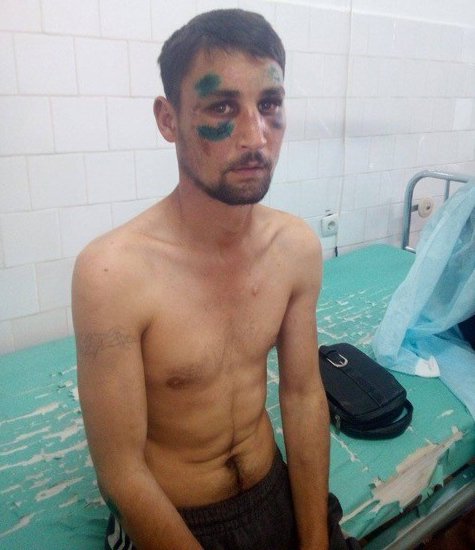Stereotypes of Roma as liars and tricksters cloud the pursuit of justice in Moldova
20 June 2016
Roma do not only have to endure degrading violent attacks, but also a barrage of racist suspicion, implications of false testimony and patronising dismissal in the resulting investigation that follows.

(Photo credit: Ion Bucur, ERRC monitor)
On 15 June 2016, Petru, the young Rom attacked in Moldova, was heard by police for a second time regarding the incident on June 1st. In the course of the interview, the investigating officer made tendentious remarks about the nature of the attack and the testimony that Petru gave.
In the presence of an ERRC monitor and lawyer, the officer said:
“Be warned about the statements you make, as many of you Gypsies have been prosecuted for false statements”.
Aside from the callous manner in which the victim of a violent racially-motivated crime was treated, these comments reflect age-old stereotypes of Roma as liars and con artists. The investigating officer then asked Petru which currency he had used for his phone top-up, the implication being that Petru’s story of racist assault while topping up his phone was a typical “Gypsy lie”.
Incidentally, the Bulgarian Helsinki Committee has recently called for the removal of an investigating officer from the investigation resulting from the brutal attack on 17 year old Mitko in May. The officer in question asked Mitko whether he identifies as “Bulgarian, Bulgarian citizen, or 'mango'" - a derogatory Bulgarian term for Roma people. This is not only discriminatory language, it also brings into question the impartiality of the investigating police officer.
Language which is actively discriminatory by promoting an ethnic stereotype is acknowledged by the European Court of Human Rights to be racist and in the course of a criminal investigation breaches the European Convention on Human Rights. In the case of Stoica v Romania (2008), a police officer’s remarks which labelled aggressive behaviour as being “purely Gypsy”, were described as “clearly stereotypical” by the ECHR. This remark was also found to violate Article 14 taken together with Article 3 of the Convention.
The propagation of anti-Roma stereotypes damages the legitimacy of investigative and judicial processes. Stereotypes can influence police officers’, prosecutors’ or judges’ views on witness credibility, or the assessment of a factual situation (e.g. the justification of a planned police operation, or the danger in which policemen found themselves at a given moment, etc.). When these stereotypes of Roma are so deeply ingrained that they are not even recognised as stereotypes, situations like Petru’s will arise. Petru, like Mitko, is faced with not only the aftermath of extreme violence, but also the fight to be heard, believed and given the respect he deserves by the investigating authorities.
The ERRC will continue to challenge anti-Roma stereotypes and stand by Petru in his fight for justice.




